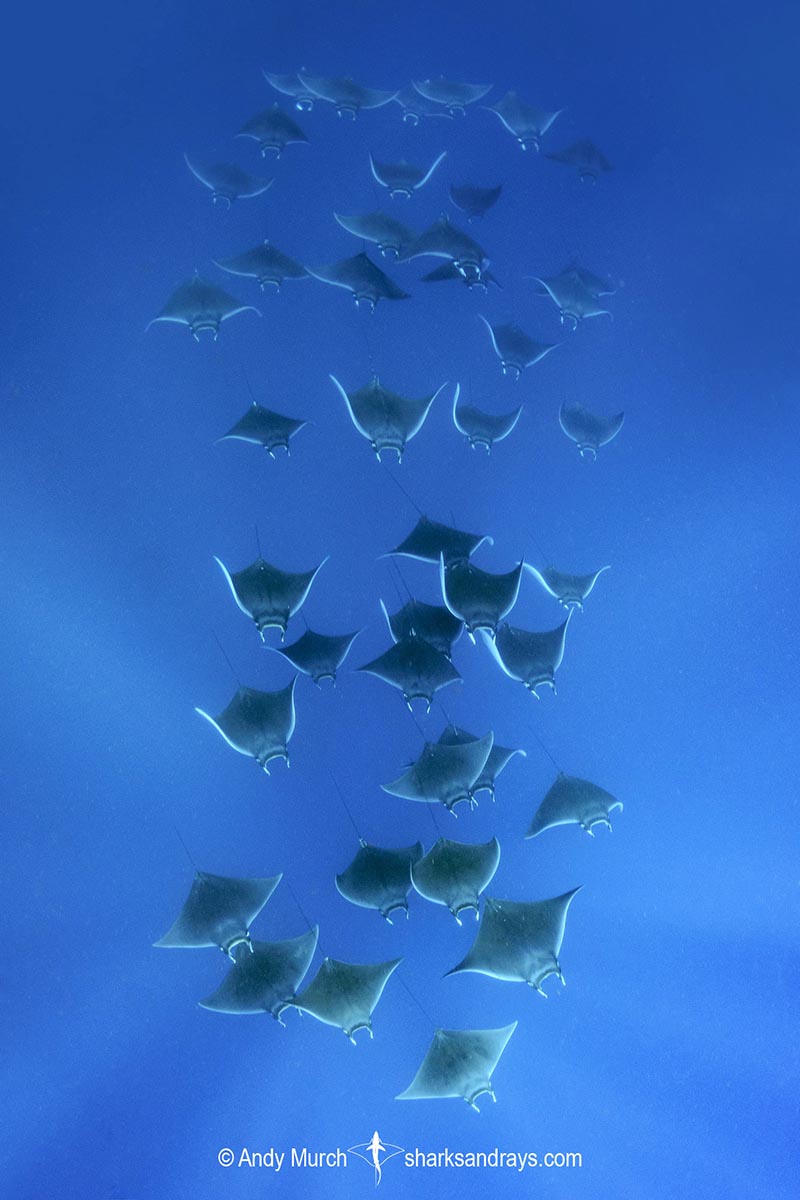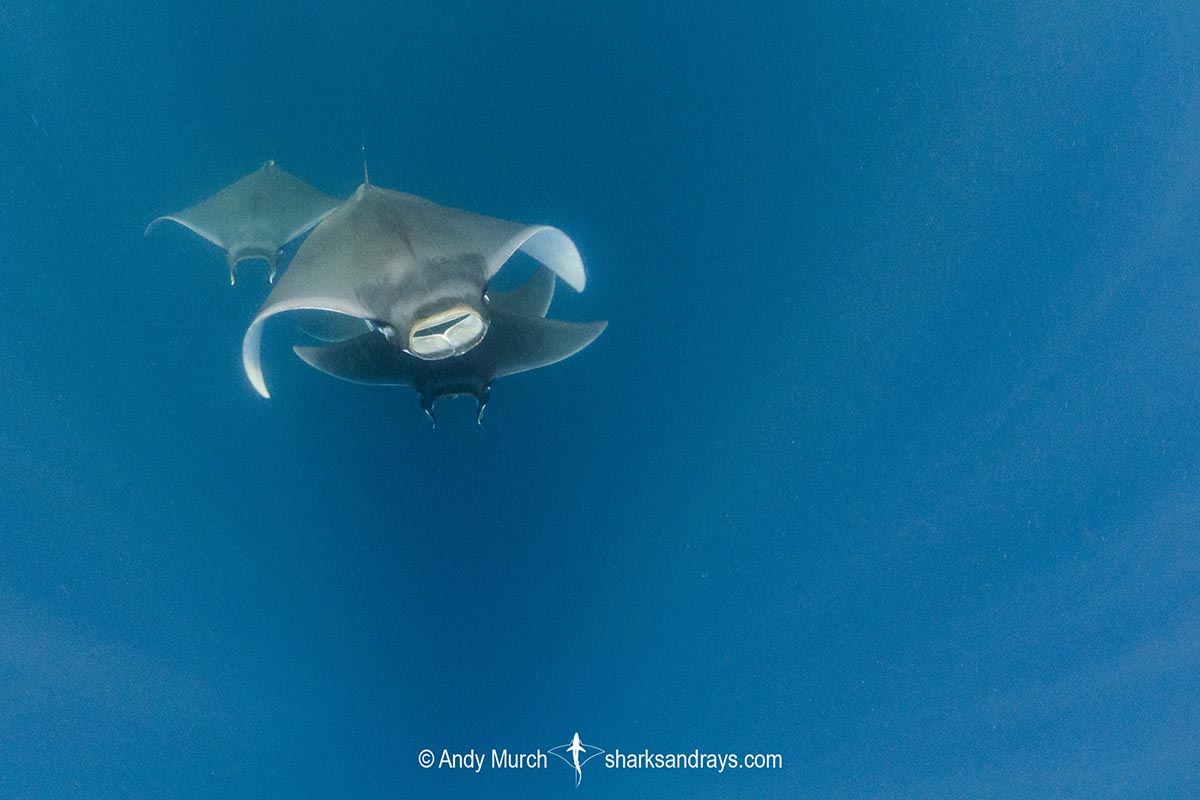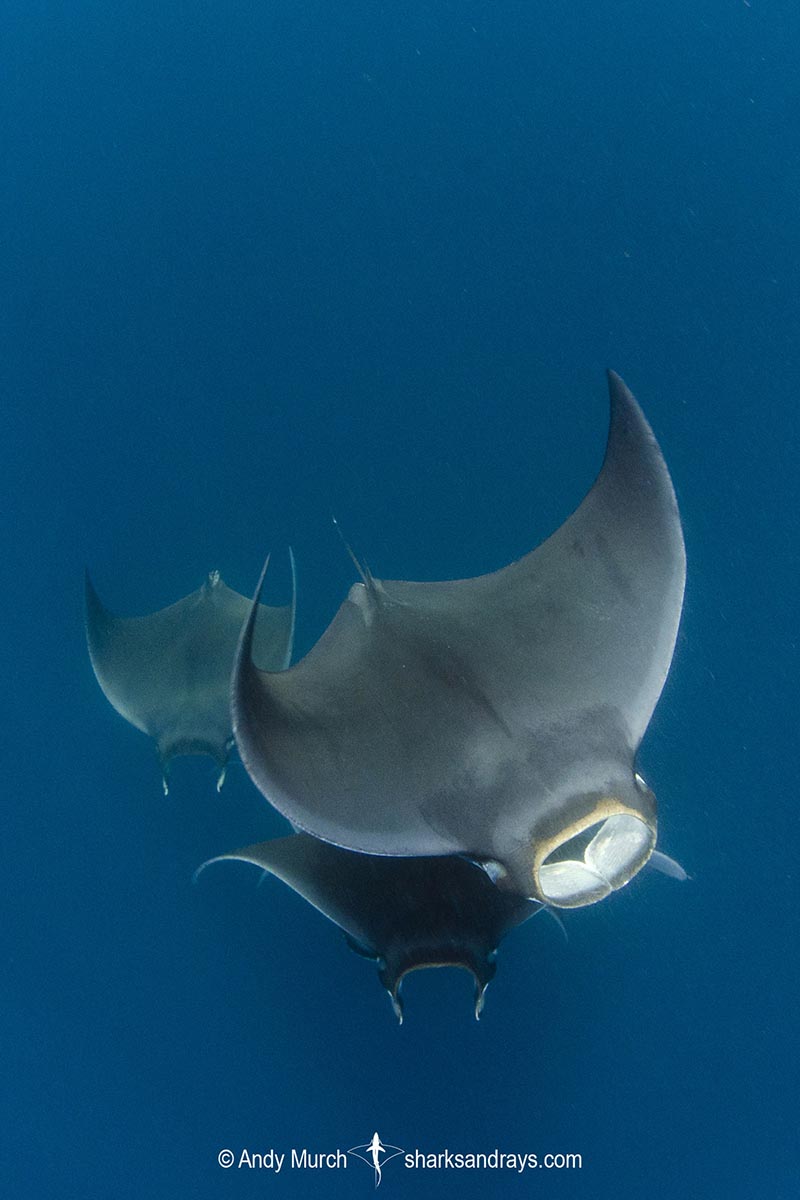Common names
Atlantic Devil Ray, Atlantic Pygmy Devil Ray, Lesser Devil Ray, Atlantic Mobula Ray.
Binomial
Mobula hypostoma.
Synonyms
Cephaloptera massenoidea, Cephaloptera olfersii, Cephalopterus hypostomus, Ceratobatis robertsi, Ceratobatis robertsii, Mobula olfersii, Mobula robertsi.
Identification
A relatively small mobula ray with a broad, kite-shaped disc and a wide subterminal mouth. Mouth width 0.11-0.14 x disc width. Upper and lower tooth bands cover approximately 50% of mouth width. Circular spiracles positioned laterally, below pectoral fin origin. Branchial filter plates separate on each gill arch.
Disc width 1.7-2x length. Anterior margins of pectoral fins straight or mildly convex. Pectoral fin apices acutely angular and somewhat falcate. Pelvic fins very small. One small falcate dorsal fin present at base of tail. Denticles widely spaced in adults; absent in juveniles. Tail long and whiplike; 1.5x disc length when intact. Caudal sting absent.
Colour
Dorsum greyish-brown or bluish-black, with a dark band across upper margin of mouth, and a second duskier (sometimes indistinct) band posterior to the first. Ventrum mostly white or light grey. Dorsal fin without a white tip.
Size
Maximum disc width 133cm. Disc width at birth approximately 55cm.

Conservation Status
ENDANGERED
Like most species of Mobula, the Atlantic Devilray has a low reproductive output. Mobula rays are targeted for their gill plates, which are used in Chinese medicine.
The Atlantic mobula is a schooling species with a coastal distribution, leaving it susceptable to bycatch in many small-scale fisheries. Fishing effort largely goes unreported or is listed as Mobula species. Dwindling sightings and landings indicate that the Atlantic Devilray has undergone significant declines in recent years. It is now absent from many areas believed to be a part of its former geographic range and there have been few sightings in many countries, particularly in Brazil.

Habitat
Pelagic in tropical/subtropical seas. Usually found in coastal areas but sometimes offshore. Surface to approximately 100m.
Distribution
Tropical/sub-tropical Atlantic. Western Atlantic from North Carolina to northern Patagonia including much of the Caribbean and Gulf of Mexico. Eastern Atlantic from Western Sahara to Angola.
Until recently, the eastern Atlantic population was thought to be a separate species (Mobula rochebrunei) but genetic evidence has shown this species to be a junior synonym of M. hypostoma.
Reproduction
Aplacental viviparity. One pup per litter.
Diet
Diet mainly planktonic crustaceans and some small bony fishes.
Behavior
An active swimmer that is usually found in small groups or very large aggregations.
Reaction to divers
Sometimes tolerant of snorkelers and divers when concentrating on feeding but otherwise rather difficult to approach.
Diving logistics
Large schools of Atlantic devil rays sometimes show up north of Isla Mujeres, Mexico, during the June-September tuna spawning event that attracts hundreds of whale sharks and mantas. The mobulas sometimes intermingle with the sharks but more commonly remain in schooling formation a few meters below their gigantic cousins.
I have also seen Atlantic devil rays in the northern Gulf of Mexico while snorkeling off the beaches in Panama City, Florida. Mobulas migrate into warmer water in the winter so the best time to look for them in their northern range is probably mid to late summer.
What’s new
View our full list of updates
Similar species
Giant Devil Ray Distinguished by larger size, white-tipped dorsal fin, and presence of caudal sting. Sympatric in South America.
Chilean Devil Ray Distinguished by bony ridge along midline and thinner, highly falcate pectoral fin apices.
Bentfin Devil Ray Distinguished by central concavity along anterior margin of pectoral fins, and white-tipped dorsal fin.











